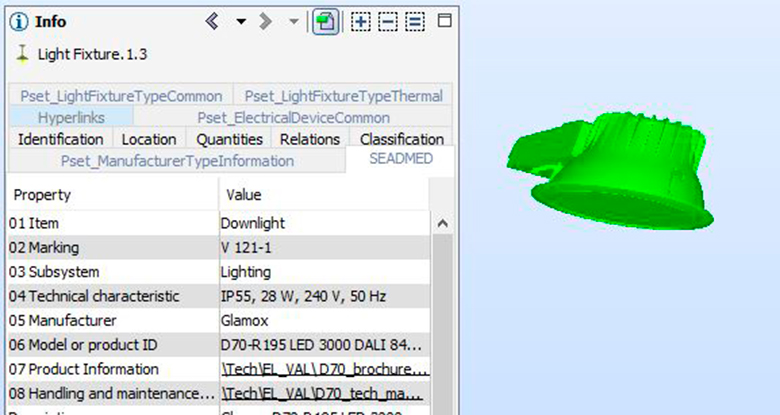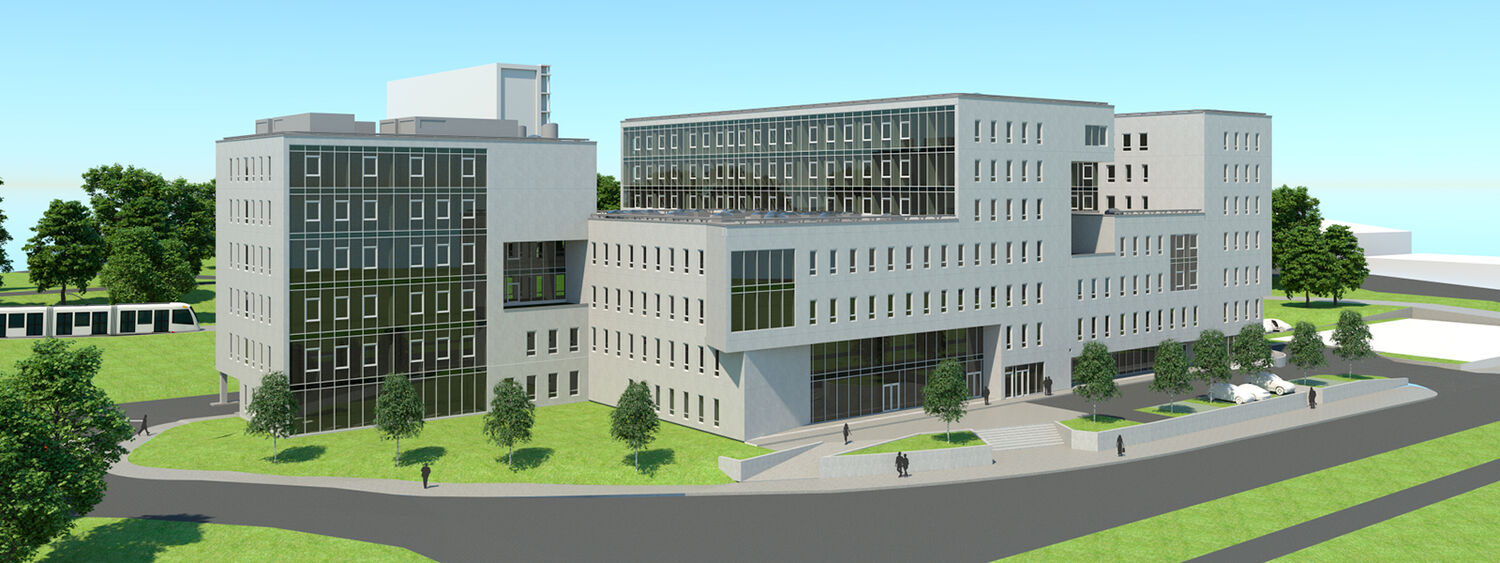
ITK Inseneribüroo OÜ - Courthouse of Tallinn
The BIM as-built model of the new courthouse of Tallinn is used digitally for administration of the building
The courthouse with more than 25,000 square meter net area has been designed with seven floors above the ground and three underground floors. The author of the architectural part is Arhitektuuristuudio Siim & Kreis OÜ. The house was built by the construction companies AS Ehitusfirma Rand ja Tuulberg and OÜ Astlanda Ehitus. The total cost of the building was 30 million euros.
The new courthouse of Tallinn, the construction work of which started in November 2016 was special because it was the first construction project that the relevant as-built model, corresponding to the information requirements of the Riigi Kinnisvara AS (State Real Estate Ltd) and intended for administration of the building had to be handed over to the customer upon delivery of the building.
Riigi Kinnisvara AS (RKAS) who manages the state property started to order the BIM models according to its instructions with the pilot project in 2009 and today already for years, all the new and reconstructed projects are designed in BIM model. Legally, RKAS regards BIM models more important than 2D drawings, i.e. in case of discrepancies the BIM model prevails over 2D drawings. Silver Ader, representative of Riigi Kinnisvara AS and the project manager of innovation and BIM described the courthouse project as a successful project where keeping to the budget and schedule without a model would have been very complicated due to the scarcity of space. Silver Ader said that the aim of ordering the BIM as-built model is to reduce the role of paper in planning the building administration and making it digital.
The electrical design of the courthouse together with the BIM model has been developed by the ITK Inseneribüroo OÜ who specialises in designing utility systems. The company laid out a detail design together with the operation model and also the as-built model was drawn up. Altogether six designers were involved in the project.
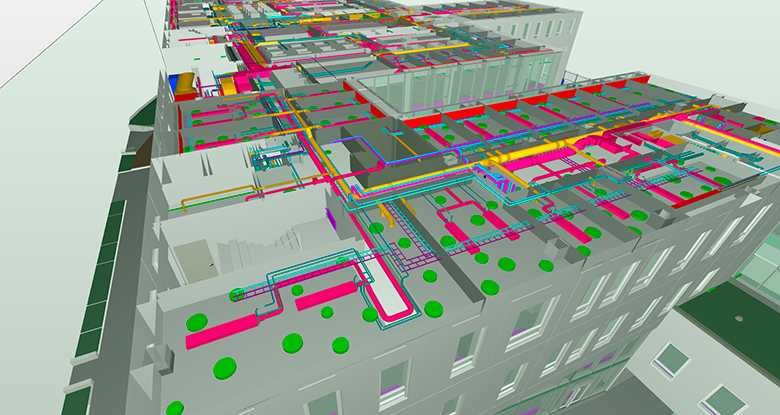
Lauri Vaaks, an electrical designer was responsible for the structural setup of the project and the data management who characterized the creation of the BIM as-built model as a simple job since the detail design was smartly arranged in advance and the only effort was the creation of the required information fields and copying the values on them from the existing information fields. 3D models of 7,325 luminaries and the information fields, used in the project were managed in CADMATIC Electrical by the product model functionality. There were a total of 144 different products and positioned luminaries. All the information fields required by RKAS were created in a couple of minutes by the additional information functionality on the equipment tab page of the CADMATIC Electrical database, and at the same time the values from the existing additional information fields were copied on them in a couple of moments. The same procedure was applied to the electrical cabinets and other modelled equipment. Additional information for the cable carriers was defined via drawings since in the design phase the CADMATIC Electrical database did not contain the relevant option for bulk determination of additional information. Lauri Vaaks is happy that today they already have applied in several new projects an option for determination of additional information on the tab pages of the cable carriers of the database for bulk defining additional information.
Mait Tamme, an electrical designer had a leading role in 3D modelling and coordination of the electrical design documentation in the detail design phase who said that the work ran smoothly and the working efficiency was increased by the working style of the whole design team of the building where the decisions were made immediately at the design meetings and the solutions followed quickly after the meetings.
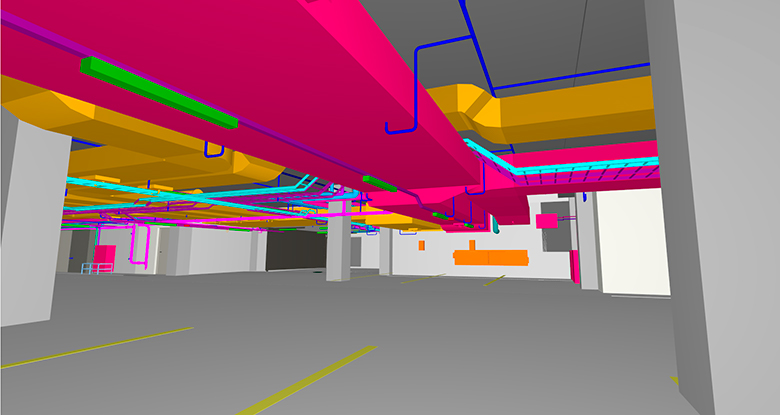
Ülari Mõttus from IC Project Management OÜ was the BIM coordinator on the courthouse building site who added that the meetings were paper-free and everything was documented via digital BCF-based solutions. Collision checks were performed in the Solibri Model Checker model check software and in connection with lack of space, there were enough collisions behind the intermediate floors. Ülari Mõttus said that the project team regularly received the BCF format reports about the collisions to be settled and thanks to the solutions in the design phase, not many things needed rework on the site. Mõttus added that the model was actively used also by the builders who visited the BIM kiosk on the site to examine the solutions.
The functionality of additional information of CADMATIC Electrical is an open system that enables to define any information fields required by the customer to the components of the electrical system. The information fields with values can be added to all the components of the project in bulk via the database or the product model dialogue. Likewise, drawing-based information can be added directly to the components or by creating boundary-definitions.
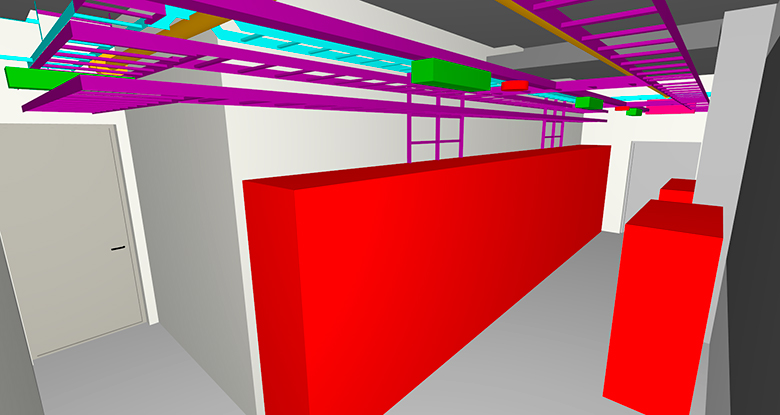
Kristjan Müül, the Sales Executive of CADMATIC remarks that the added additional information is saved on the project equipment and the information fields are exported automatically to the BIM model and reports. All the components of the electrical system should be defined on a specified tab page in the BIM as-built model according to the requirements of RKAS and include the information fields below together with values.
